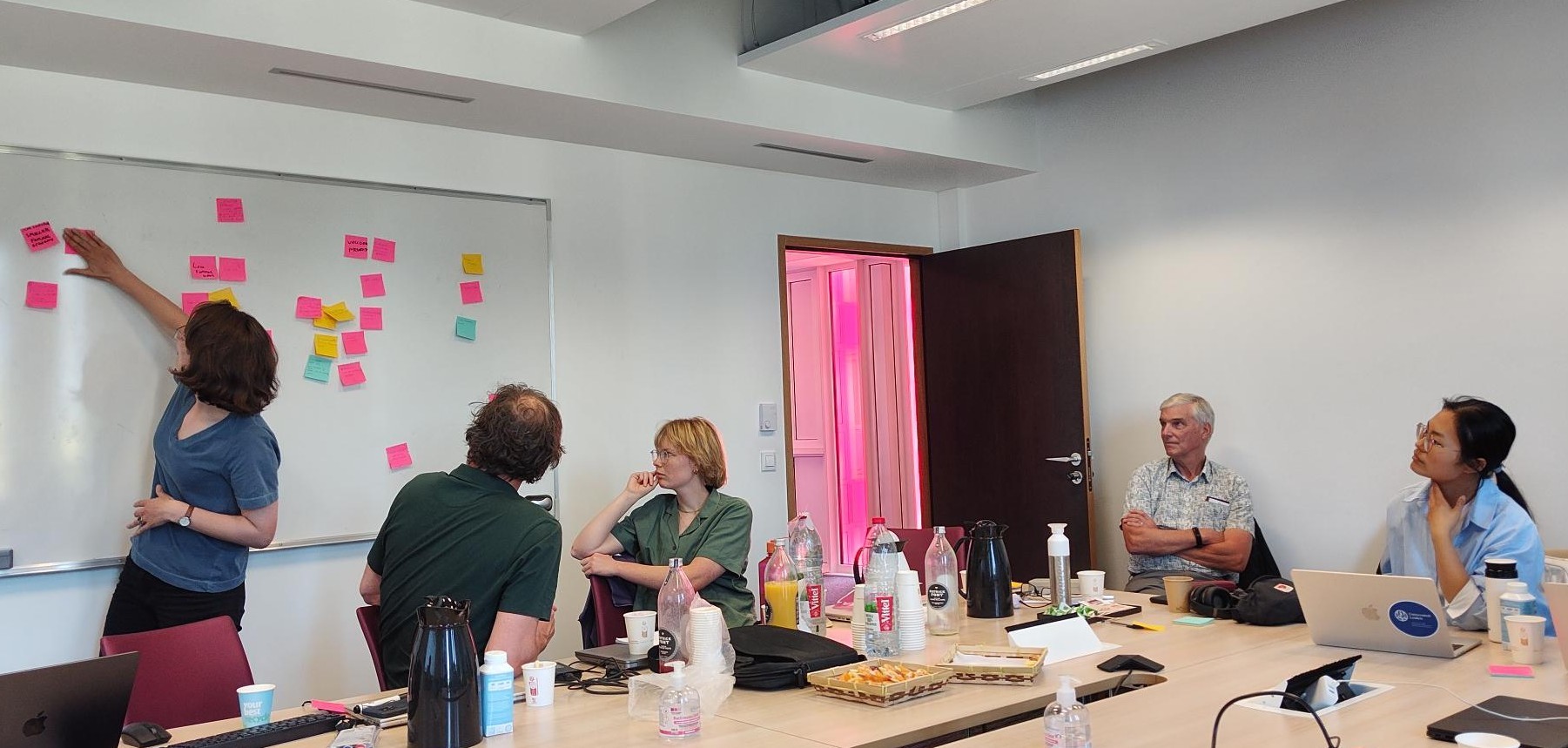Reimagining models through co-creation
Connecting a sustainable and inclusive wellbeing vision to reality

By Magalí Brosio and Erin Quigley
In an ever more complex world, we need tools that not only meet today’s challenges but also shape better futures. At ZOE Institute, together with our partners in the WISE Horizons project, we are exploring how co-creation can support the development of models that promote wellbeing, inclusion, and sustainability. In this blogpost, we share some of the insights and reflections that emerged from our most recent Modelling Lab.
Towards a future-fit model for sustainable and inclusive wellbeing
From the outset, the WISE Horizons project has aimed to imagine and support alternative scenarios for 2050 that break away from the ‘business as usual’ path. Our goal: to build a shared vision of a world with wellbeing, inclusion, and sustainability at the core, and to identify the policy levers to bring this vision to life. However, we quickly identified that the most widely used technical tools, including popular macroeconomic models, are not fit for this purpose.
The use of macroeconomic models in policymaking is neither new nor rare: National, regional, and global institutions rely on them to inform decisions and predict outcomes. And while these models have substantially evolved, increasingly recognising the limitations of economic indicators like gross domestic product (GDP) as a proxy for societal progress and incorporating dimensions of wellbeing, inclusion, and sustainability, important gaps remain. For instance, due to data limitations, it is difficult to assess with existing models how economic structural change influences inequality outcomes. Likewise, the environment tends to be represented in an overly simplified way, reduced to energy-related impacts such as GHG emissions. Lastly, the economic impacts of both the sustainability and inclusion dimensions, as well as how these three influence wellbeing, are generally omitted.
Addressing these gaps, the WISE Horizon project aims to build on existing work on macroeconomic modelling and identify suitable pathways for further development. To achieve this, we’re creating several thematic models—focused on key areas such as income inequality, time use, or the environmental bill of the top 10%—and an integrated model grounded on them that encompasses the most essential components for the futures we envision.
Our modelling work, however, is not only a technical task but a co-creative effort. Co-creation is the process of involving different stakeholders in the creation of solutions, ensuring diverse perspectives are heard, fostering inclusion, ownership, and innovation. In the case of our Modelling Lab, we brought researchers with different backgrounds and areas of expertise together to help our modelling team identify the most relevant elements and dynamics within and across thematic models and develop a set of shared criteria for prioritising them. Elements such as high impact, theoretical coherence, and representation emerged as central. Using these as guidance, we collectively identified key variables and dynamics to be modelled, such as the linkages between gender and time use, or the impact of soil quality on health.
Shifting perspectives
However, the criteria and the elements prioritised were still grounded on our specific experiences and backgrounds. One moment that illuminated this was a visioning exercise that invited us to step into the shoes of three key societal actors: a policymaker, a civil society professional, and a journalist. Through imaginative storytelling, we narrated a typical day in the life of each ‘persona’—designed using our stakeholder research—to explore their distinct worldviews, constraints, and aspirations.
In groups, we collaboratively mapped out each persona’s perspective. From the policymaker’s perspective, we were able to grasp how aspects like employment prospects, cost of living, and unequal regional impacts of job loss quickly rose to the top of the agenda. Meanwhile, the civil society professional emphasised gender, health, and effects of inequality. Lastly, the journalist focused on clearly communicating direct impacts on citizens’ lives, such as labour market dynamics and health. The exercise exposed new sets of priorities for a macroeconomic model based on wellbeing, inclusion, and sustainability.
Furthermore, the lab demonstrated how WISE modelling goes beyond abstract calculation. Co-creation encourages us to zoom out and frame our work within a broader context, while simultaneously grounding it in everyday realities of people. Therein lies both the promise and challenge of a WISE lens: it has profound implications on what it means to co-create, who gets to have a say in shaping the future, and how to reflect the interdependence of people and planet.
As the lab underscored, when we include voices that have been historically ignored and most negatively impacted, and critically engage with societal narratives, modelling holds the potential to become a transformative framework for a future rooted in sustainable and inclusive wellbeing.
Co-creating futures
During the lab, a central question emerged: should our models adapt to reflect current realities, or should they continue to strive toward a bold, shared vision of 2050? In response, participants offered varying perspectives. Yet we all agreed that we want our models to be tools for transformation. They should not simply reflect the present but shape a better future. They must be capable of demonstrating that alternative pathways are not only desirable but viable—especially in a world where such possibilities are often dismissed. At the same time, to be influential, these models must remain anchored in present-day policy debates.
In a world rife with uncertainty, many unexpected changes arise, be they ecological or political, that disrupt our ability to make sense of and chart the future. Co-creation offers a way to respond. It is a powerful tool that brings together diverse forms of knowledge and opens up new possibilities. While it may not resolve the tension between present realities and ambitious futures, co-creation provides us with the space to navigate it together.